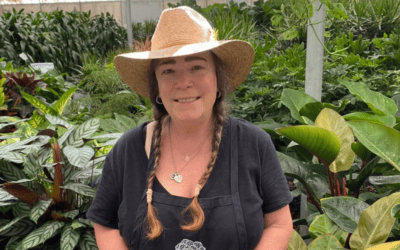
The golden bronze leaves on this Kalanchoe give it the same finish as a new copper penny. Branching, succulent shrub that if given the proper conditions can reach up to 6’ tall. They way this plant gets its name is almost as interesting as the plant itself. Kalanchoe itself has arguable backgrounds from Chinese and Indian translations. We like the Chinese words that describe the easy nature that these plants multiply. “Kalan Chauhuy” has a direct translation of “which falls and grows”. Many succulent plants in the Kalanchoe family grow easily from fallen leafs or plant-lets that grow on the leafs themselves. Also, the Greek word for fathom, “orgya”, the distance measured between outstretched arms, is thought to be a description of this plants growth ability.


